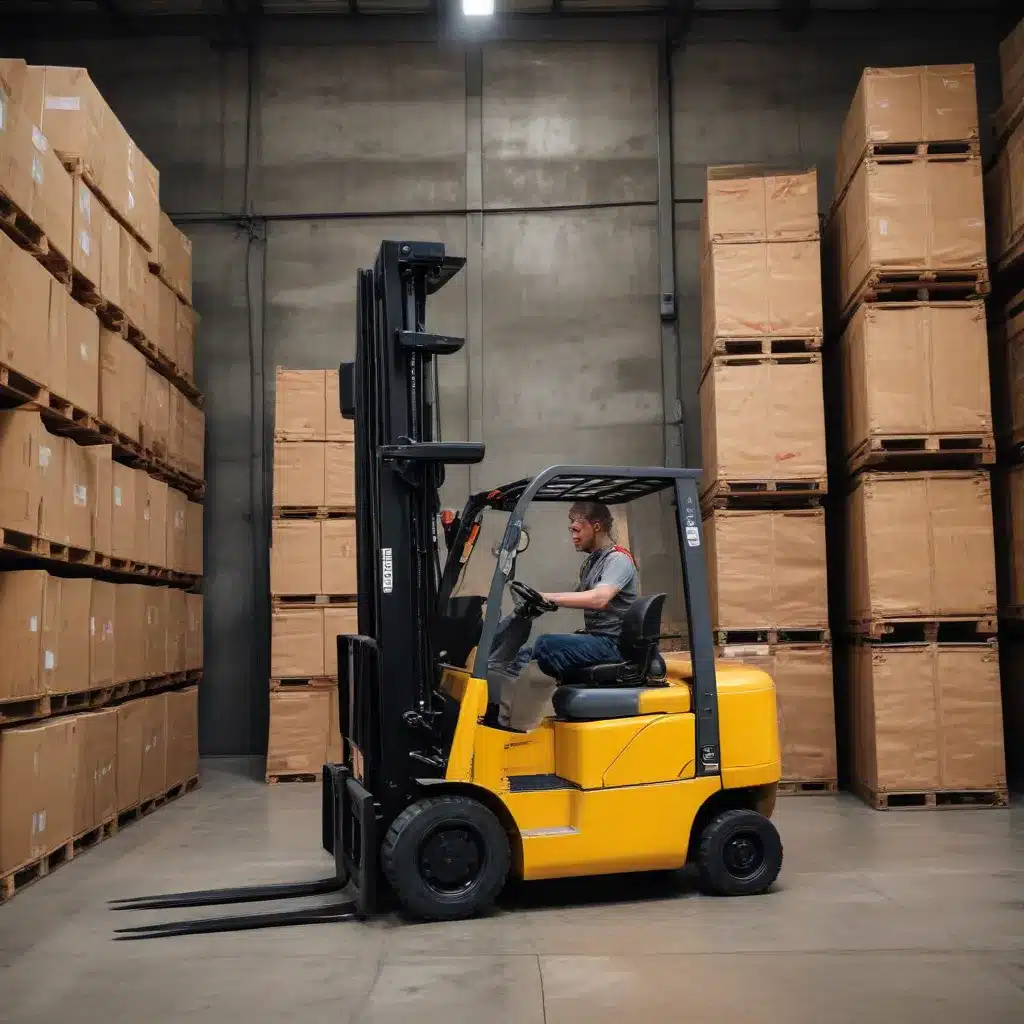
Understanding the Risks of Forklift Operations
Industrial and warehouse settings are incomplete without the presence of forklifts. These machines are essential for moving heavy loads from one place to another, making our lives easier. However, forklifts are not without their risks. Forklift accidents can be severe, leading to injuries, fatalities, and costly damages. Imagine you’re busy navigating a warehouse, focusing on your tasks, when suddenly a forklift veers into your path. Suddenly your day goes from productive to painful. It’s a harsh reality that many workers face, but with the right precautions, it’s entirely preventable.
Forklift safety should be a top priority in any workplace where these machines are used. Implementing practices and protocols that can reduce the risks of forklift operations is crucial for preventing workplace accidents that could lead to injuries or even fatalities. Forklift safety helps ensure that every worker, whether operating lift trucks, electric forklifts, or working nearby, goes home safely at the end of the day.
Importance of Proper Forklift Loading and Capacity Limits
One of the most common causes of forklift accidents is overloading. It might be tempting to think “just one more box” won’t hurt, but forklifts have weight limits for a reason. Ignoring those limits can lead to the forklift becoming unstable, increasing the risk of tipping over. When this happens, it’s not just the operator whose life is in danger but also nearby pedestrians who are at risk.
Always check the forklift’s lifting capacity before lifting. Distribute the load evenly, and if it is tall or bulky, double-check that it doesn’t block the operator’s view. If necessary, use additional equipment like forklift safety cages to secure the load and ensure safe transport.
Comprehensive Forklift Operator Training
Improper forklift training is one of the leading causes of forklift-related accidents in the workplace. According to the Occupational Safety & Health Administration (OSHA), approximately 70% of forklift accidents could be prevented with stricter training protocols. Effective forklift training should go beyond just the basics of operating a forklift and focus on hazard awareness, proper load handling, and navigating specific workplace environments.
Operators must be able to assess risk factors like uneven surfaces or pedestrian traffic, and they should participate in refresher courses annually to ensure that they stay updated on safety protocols and can adapt to any new risks that arise in their workplace.
Importance of Forklift Maintenance and Inspections
Forklifts, like any other machine, need regular maintenance to keep running smoothly. Neglecting maintenance can lead to mechanical failures, which can have disastrous consequences. Performing machinery pre-starts regularly and scheduling regular professional servicing can help keep the forklift in good working order and address issues before they become serious problems.
In addition to maintenance, daily inspections are an important part of forklift safety. Before each shift, operators should perform a thorough inspection to ensure the forklift is in good working condition. This prevents accidents caused by mechanical failures and ensures industrial safety.
Enhancing Pedestrian Safety Around Forklifts
Forklifts and pedestrians mix about as well as oil and water. To avoid turning your warehouse into a real-life game of Frogger, communication is key. Use warning signals like lights and horns when operating forklifts in areas where pedestrians are present. Train workers on both sides—operators and pedestrians—about the importance of being aware of each other’s presence to avoid any risk of accidents.
Forklifts have blind spots that can make it difficult for operators to see what’s around them, especially when carrying large loads. This can lead to collisions with objects, other vehicles, or people. Use mirrors and other aids to improve visibility, and implement the use of spotters in areas where visibility is limited. Instruct operators to drive slowly, as it is better to arrive safely than quickly.
Lessons from Past Forklift Accidents
Learning from past accidents is one of the best ways to improve forklift safety. Let’s look at a few case studies that highlight the importance of following safety protocols:
-
“Seatbelt? What seatbelt?”: In 2013, a 27-year-old employee at Kockenbagner Brewing Co., DBA Stone Brewery, was killed after being ejected from his forklift. The employee was not wearing a seatbelt, which led to his fatal injury when the forklift tipped over after hitting a concrete bollard. The incident emphasizes the importance of using operator restraint systems to prevent such accidents.
-
“I didn’t see it coming.”: A forklift operator at Frito-Lay was killed after being crushed between a manually operated forklift and an automatically guided vehicle (AGV) in 2008. The AGV’s collision avoidance system failed to detect the older manual forklift, and the employee had not set a safety cone that might have helped avoid the accident.
These incidents underscore the importance of following safety protocols, maintaining equipment, and ensuring effective communication between operators and pedestrians to prevent forklift-related accidents.
Conclusion: Prioritizing Forklift Safety for a Safer Workplace
Forklifts are an essential part of many industrial and warehouse operations, but without proper safety measures, they can turn into serious hazards. From ensuring operators are well-trained to maintaining equipment and implementing daily safety checks, every step matters when it comes to preventing accidents.
By following the Forklift Reviews guidelines and implementing best practices, you can take your forklift safety efforts to the next level and keep your workplace accident-free. Remember, always check the forklift before use, stick to capacity load limits, and keep a clear view. Make sure operators are trained and communicate well with others to avoid forklift-related injuries and accidents.

